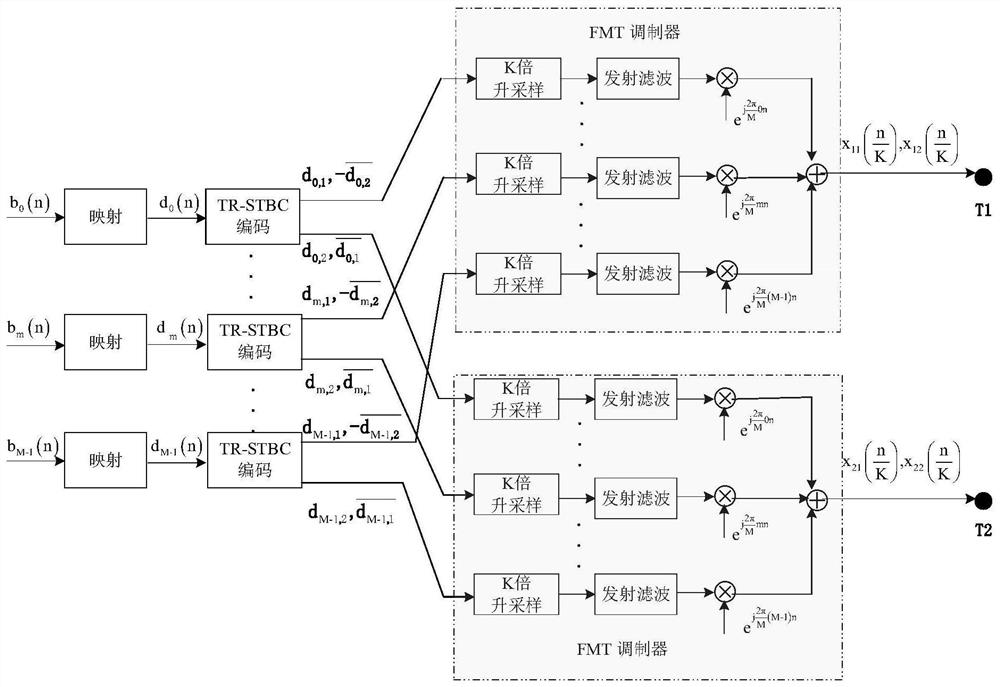An underwater acoustic communication method combining time-anti-space-time block coding and adaptive equalization
An adaptive equalization, block coding technology, applied in the shaping network in the transmitter/receiver, ultrasonic/sonic/infrasonic transmission systems, preventing/detecting errors through diversity reception, etc., can solve the disadvantage of small underwater communication nodes. In order to achieve the effect of good ISI suppression performance, reduced hardware and computational complexity, and low miniaturization
- Summary
- Abstract
- Description
- Claims
- Application Information
AI Technical Summary
Problems solved by technology
Method used
Image
Examples
Embodiment Construction
[0030] In order to make the above-mentioned objects, features and advantages of the present invention more obvious and easy to understand, the present invention will be further described below in conjunction with the accompanying drawings:
[0031] The SISO method of the present invention (Single-input single-output SISO and adaptive equalization combined FMT underwater acoustic communication method, referred to as SISO method); SIMO method (Single-input multiple-output SIMO and adaptive equalization combined FMT underwater acoustic communication method, referred to as SISO method).
[0032] The technical scheme of the present invention is realized as follows:
[0033] At the transmitting end of the communication system, the traditional space-time block coding principle is used to design the corresponding TR-STBC, and the TR-STBC is used to divide the symbol sequence transmitted on multiple sub-carriers into several sub-sequences, and transmit them according to the orthogonal ...
PUM
 Login to View More
Login to View More Abstract
Description
Claims
Application Information
 Login to View More
Login to View More - R&D
- Intellectual Property
- Life Sciences
- Materials
- Tech Scout
- Unparalleled Data Quality
- Higher Quality Content
- 60% Fewer Hallucinations
Browse by: Latest US Patents, China's latest patents, Technical Efficacy Thesaurus, Application Domain, Technology Topic, Popular Technical Reports.
© 2025 PatSnap. All rights reserved.Legal|Privacy policy|Modern Slavery Act Transparency Statement|Sitemap|About US| Contact US: help@patsnap.com



